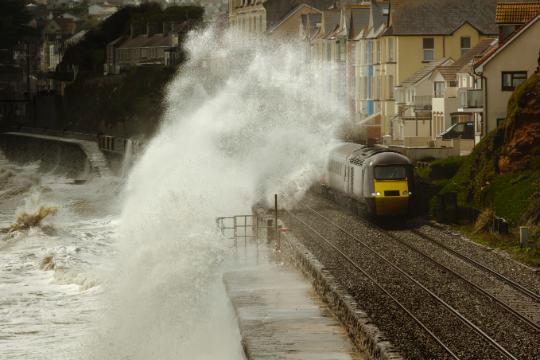Recommendation 8
Implement a quantitative framework within the infrastructure appraisal process to assess the value of flexibility and resilience across the whole system over the long-term.
Recent extreme weather events have tested the UK’s ageing infrastructure systems and exposed a limited long-term view over investment and improvements to enhance resilience.[44,45] Predicted changes in the climate and socio-economic development will, without appropriate action, increase the risk of disruption from extreme weather. However, valuing the benefits of measures to enhance the resilience of infrastructure is challenging because of the long – often generational – timeframes involved and the relatively low frequency of extreme events under consideration. For example, flood defence appraisal guidance can bias investment towards the protection of housing and individuals, but this could be to the detriment of investing in protection for individual infrastructure assets, such as road links, that provide critical services to entire communities. Transport infrastructure appraisal is biased towards benefits that improve system performance under normal operating conditions.[46*] This can leave whole regions at the mercy of conventional benefit-cost ratios that lack consideration of wider economic and social value, strategic importance and interdependencies with other infrastructure services.[47*] Crucially, it is important to think about the resilience of the service, which may include the role of measures such as behavioural change and spatial planning and not just reparation or strengthening of assets.
A review of international infrastructure business models has highlighted the risks of public and private sectors focusing on short-term financial gain instead of taking a long-term, strategic perspective on infrastructure, spatial planning and urban development.[25*] To enable infrastructure systems to respond to future uncertainties in environmental, demographic and economic conditions, it is essential to consider future flexibility (i.e. to what extent options become closed) within an appraisal process. Infrastructure’s long lifespan means that it is particularly important to consider long-term changes and uncertainties, to understand the true cost of disruption to infrastructure (e.g. in terms of access to employment, productivity, health and wellbeing), the costs of measures to enhance resilience and the opportunity costs of measures that reduce future flexibility.
Flexible options for the London-Penzance railway line
The collapse of the London-Penzance railway line at Dawlish in Devon was a high profile infrastructure disruption and left the region without a main railway connection to the rest of the UK for 5 months. Situated just a few metres above mean sea level, the line has |


